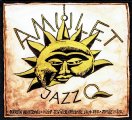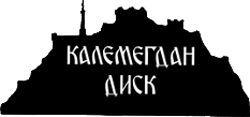Information
Shop
Search
Catalog
- Recommendations
- Coming soon
- New in stock
- Back in stock
- ABC-Lists CDs
- ABC-Lists LPs
- List of all items CDs
- List of all items LPs
Order

Jazz Q
Amulet
- Format: CD
- Band: Jazz Q
- Title: Amulet
- Band's Origin: CS
- Style: Jazzrock, instrumental
- Rating: 4
- Release Year: 2020
- Recording Year: 2020
- Production Year: 2020
- Record Company: Studio Budikov
- Item's Number: SB 038
- Color of the Label:
- Edition:
- Extras: digipak
- EAN: 8594159980389
- Weight: 63 g
- Visual: new
- Acoustic:
- Cover: new
Studio Budíkov Release Information
Many argue, and I agree with them, that any work of art must speak for itself. It does not need interpretation or commentary. Music either grabs you and lifts you up in catharsis, or it is not good music. It does not matter the mood of the composer or performer at the time, nor the conditions under which the work was created, nor the moods or situations of the players. At the moment of the work’s creation, its authors go by the wayside and the music then takes on a life of its own.
But my personal experience says otherwise. I have always wondered how the creation of this beauty came about, how who resonates with whom, what the relationships in the band were like, who agrees with whom in terms of opinion, and what kind of discussion accompanied the mixing of this or that song. Sometimes I could sense it just by listening to it, other times it was confirmed by the musician’s biography. In short: the picture was completed with insights that are not audible from the recording, and I appreciated even more the human uplift in the improvisation and the atmosphere of the whole thing.
And so, on my current CD, I resolved that I would also try to uncover something that is not heard on the record, but which might satisfy the listener’s curiosity. Here are a few notes on the process of Amulet’s creation.
After the CD / LP Talisman, Jazz Q is in a consolidated form. The band is the only one in the Czech Republic and perhaps also in Central Europe to play concert instrumental jazz-rock (although I don’t rule out Zdeněk Fišer coming up with vocal stuff in the future). It is worth mentioning that the new album is no longer homogeneous in terms of composition as the previous albums and that all members of the band contributed to the diversity of the collection.
The socalled coronavirus crisis, which basically stopped all live playing, had a paradoxically beneficial effect on the calmness and the feeling of having enough time to work in the studio. During the rehearsals, there was also no usual chanting to the composer about what kind of paralysis he had written down, and even wrongly recorded in the notes. Nor did the usual disillusionment of listening to freshly recorded material take away the musicians’ confidence. On the contrary, the recordings seemed quite listenable after a few days. Not flawless, perhaps (that’s what the all-powerful sound engineer is for, to fix the little things), but full of power and energy.
After recording and selecting the images, it’s good to take a break from the recorded music for a few weeks. This allows you to come back after a while, to approach the recorded music with perspective and distance, and to re-engage your critical mind and sensibility. As George Martin, the famous Beatles producer, wrote somewhere, it is advisable not to get carried away by the possibility of recording something else in the spare tracks; on the contrary, it is advisable to go “to the core” of what has been recorded and thus find out where the strength, weakness or essence of a musical idea lies.
All this happened, the mix was subjected to overwhelming criticism from all musicians and now you have our new album in front of you.
“Tetralog” is a bit reminiscent of Coltrane modal quartet playing in superposition harmonies with a beautiful guitar solo. The Hammonds just reinforce the historical parallel.
“Jinohraní” (The Other Playing) begins with a wah-wah vamp over a simple piano harmony. The chorus then descends in the Hammonds’ transparent harmonies. All to a rocking rhythm set by a cackling guitar.
“Serendipity” is an Olivier Messiaen-influenced harmonic ballad delivered primarily by Přemek’s bass. It lacks the usual jazz quint harmonic progressions and final cadences, and the features used are not logically related. Moreover, “Serendipity” implies a happy accident.
Santana’s “Silokřivky” (Silocurves) is reminiscent in title and harmony of the title “Siločáry” (Silocary) from our last album. Here the usual harmonic clichés reign supreme, which the listener has heard long ago and knows what to expect in the solos. That is what I hope Zdeněk and I will be able to give him!
“Amulet” is introduced by Zdeněk’s well-drawn guitar logically losing its intensity until Přemek’s calm solo. The versions are clear, the refrains then mahavishnovsky harmonically decayed into a diminished scale and a plunging bass line.
“Mlhavé ráno” (Misty Morning) is a downright cool song written by Zdeněk and already played by him in the past. It has pleasing harmonies as if fused with his heart and guitar, which, along with Přemek’s bass, plays a prominent role. The electric piano just cements the almost acoustic sounds of both guitars.
“Mezi námi” (Between Us) is Přemek’s masterpiece as a composer and soloist. It’s amazing how many timbres, from the flugelhorns to the bottom empty strings, the bass guitar can play at a killer tempo and twice over. For a long time I couldn’t grasp the basic tectonics of the short piece, so I am happy to second here...
Filip‘s “Hit It” was meant for all four soloists, it is easy to play and has logical harmony. It also bears the hallmarks of clarity so necessary when writing for Filip’s big band, where it also originally saw the light of day.
“Toulky” (Wanderings) is a calm and logically written piece respecting all diatonic procedures. However, it is broken out of its monotonous rhythm towards the end by Filip’s expressive drumming, which gradually rolls all the coolness into a fade out.
“Amalgam” is composed on a simple sequence of identically constructed chords. After the theme, however, the whole thing turns into solos in double time. The last theme returns to the original rhythm again.
“Klevety” (Gossip) appears as an uncluttered 10/4 piece heavily phrased by a D6 clavinet. But don’t be fooled. Putting aside the unusual meter, “Klevety” is actually a cocooned ten-bar blues played in a blues scale.
The jaunty three-quarter “Jarmark” (The Fair) is a more carnival bustling tune using a sound heavily influenced by the fairground snark in the keys.
True to its name, in “Rytmožrout” (Rhythm Eater) the rhythm guitarist frequently and irregularly alternates between 3/4 and 4/4 time. At the end, Filip plays a solo into the fade out respecting all the irregularities of the rhythm.
In the fine tradition of my albums, the last track of one album prefigures the first track of the next. So – what’s next?
Martin Kratochvíl
Tracklist
1. Tetralog 4:52
2. Jinohraní 5:02
3. Serendipity 5:18
4. Silokřivky 4:17
5. Amulet 4:57
6. Mlhavé ráno 4:56
7. Mezi námi 2:10
8. Hit It! 5:43
9. Toulky 5:18
10. Amalgam 3:59
11. Klevety 5:02
12. Jarmark 3:37
13. Rytmožrout 3:56


